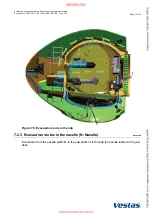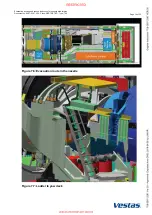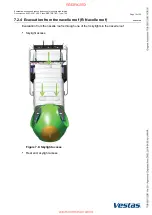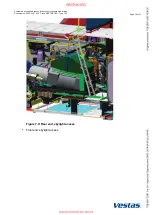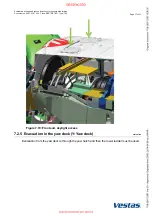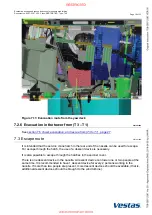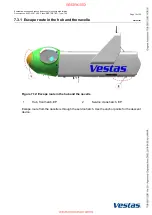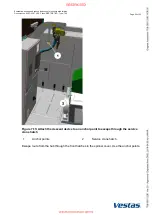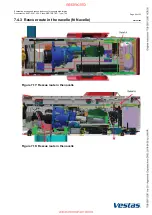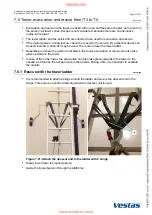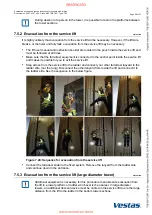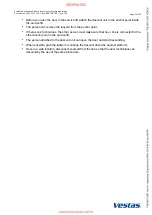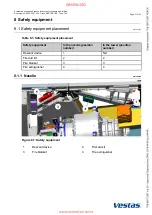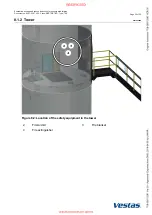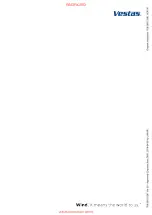
7.5 Tower, evacuation, and rescue from (T3 to T1)
0011461421
•
Evacuation and rescue in the tower are dealt with in one and the same chapter, as the route is
the same in all tower zones. Escape is not considered, because there are no alternative
routes in the tower.
•
The tower ladder and the service lift are intended to be used for evacuation and rescue.
•
If the injured person, during rescue, cannot be moved to the service lift, a descent device can
be used instead. A stretcher may be used. The route is down the tower ladder.
•
Depending on where the person is located in the tower, evacuation or rescue can also take
place upwards in the tower.
•
In case of fire in the tower, the evacuation can also take place upwards in the tower to the
nacelle, and then by the escape route in the nacelle. During a fire, it is important to ventilate
the nacelle.
7.5.1 Rescue with the tower ladder
0011461420
•
It is recommended to attach 2 slings around the ladder and secure the descent unit in the
straps. This secures a centred lowering when the descent unit is used.
Figure 7.21: Attach the descent unit to the ladder with 2 slings
•
Slowly lower down the injured person.
•
Guide the injured person through the platforms.
Evacuation, escape and rescue instruction for onshore wind turbine
Document no.: 0067–2397 V00 · Class: RESTRICTED · Type: T09
Page 27 of 33
Summary of Contents for V105-3.45 MW
Page 33: ......

